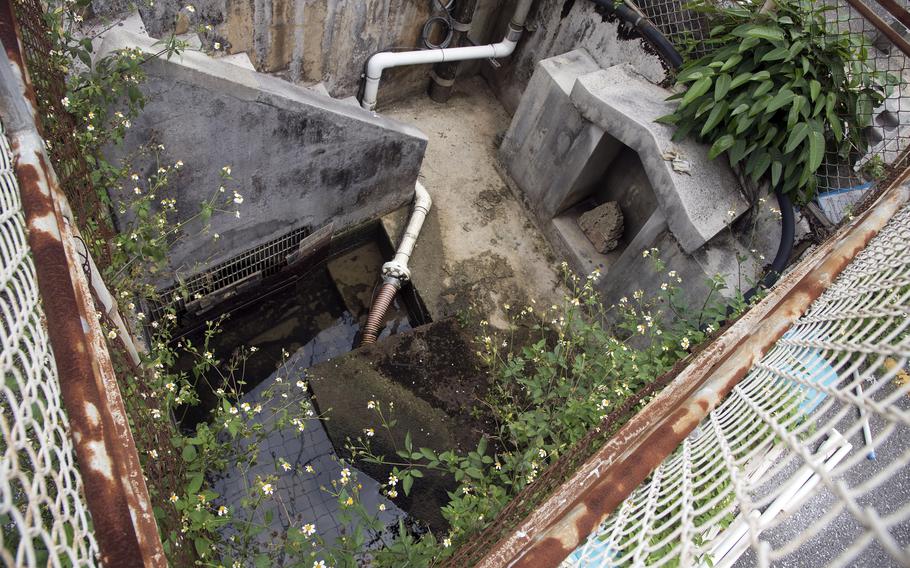
High PFAS contamination levels have been recorded at Ubugaa spring in Ginowan city, downstream from Marine Corps Air Station Futenma, Okinawa. (Keishi Koja/Stars and Stripes)
High levels of toxic “forever chemicals” have been detected in groundwater near two U.S. military airfields on Okinawa, and local officials say the bases are “highly likely” to be the source, according to a recent government survey.
Okinawa prefecture’s Environmental Protection Division released results Thursday from its annual survey of PFAS — per- and polyfluoroalkyl substances. The study found PFAS levels exceeding Japan’s water quality standard of 50 parts per trillion at 28 of 46 sampling sites around U.S. bases.
The survey found elevated levels of PFAS at 13 spots around Kadena Air Base and nine sites downstream of Marine Corps Air Station Futenma.
The highest contamination level — 1,600 parts per trillion, or 32 times the national standard — was recorded at Ubugaa spring in Ginowan city, downstream from the Marine airfield.
Despite the high levels, the report noted that “the overall trend has remained stable” since sampling began in 2017, a year after elevated PFAS levels were first reported in 2016.
The division concluded that contamination near Kadena and MCAS Futenma is “highly likely to be sourced from both bases.” PFOS and PFOA — both components of PFAS — were commonly used in aqueous film-forming foam, a fire suppressant used by both U.S. and Japanese forces.
Although the foam has been phased out and U.S. Forces Japan announced the incineration of its remaining stockpiles last year, PFAS continues to be found in consumer products such as water-repellent fabrics and nonstick cookware.
The survey also found elevated PFAS levels at two sites near the Marine Corps’ Camp Hansen in northern Okinawa and four sites near Camps Courtney and McTureous.
A site near Camp Foster was tested, but PFAS levels did not exceed the national standard.
The prefecture previously conducted the survey twice a year but switched to an annual schedule in 2024 after determining that seasonal changes did not affect the results, a division spokesman said by phone Monday.
In July 2023, the division and experts from five Japanese universities agreed to increase the number of sampling sites in an effort to identify the source of contamination more precisely. However, those plans remain in progress.
“We are still arranging to expand sampling sites in other surveys,” the spokesman said.
In August, the division requested that Japan’s central government collect water samples on U.S. bases.
“They responded that they are explaining the situation to the U.S. side, but we have never received a clear answer from them,” the spokesman said.
Some Japanese government officials may speak to the press only on condition of anonymity.
The U.S. Environmental Protection Agency has stated that no level of PFAS is considered safe in drinking water. The American Cancer Society has linked PFAS exposure to an increased risk of tumors in the liver, breasts, testicles and pancreas.
Marine Corps Installations Pacific spokesman Wesley Hayes said Monday by email that PFAS contamination is a “shared concern” tied to both military and civilian industrial activities across Japan, including firefighting, sewage treatment, landfills and chemical plants.
“Marine Corps Installations Pacific remains committed to protecting the health of our personnel, their families, and the surrounding communities in which we live and serve,” he said, adding that the service continues to comply with all agreements and procedures with the Japanese government.
The 18th Wing at Kadena provided a similar statement Monday and referred further questions to USFJ.